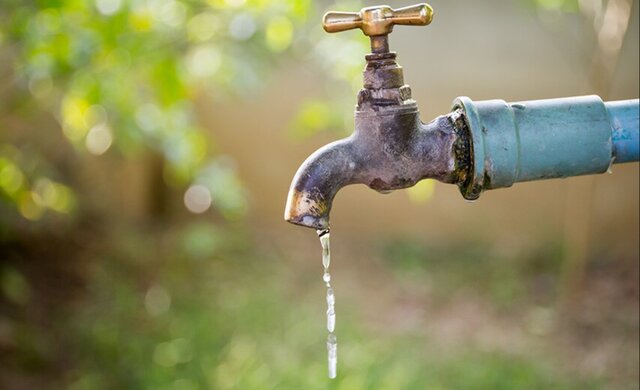When Prime Minister Narendra Modi flags off the world’s longest river cruise, MV Ganga Vilas on 13 January in Varanasi, it will be the biggest statement on the strides that we as a nation have made in managing our water resources. The cruise will cover a distance of more than 3,200 km across 27 river systems in five states. This news will put the spotlight on the silent but enormous body of work that has happened in water management in India. Over the last few years, some excellent water conservation initiatives were taken up by the government as well as the private sector. The Ministry of Jal Shakti has been driving large water conservation programmes across the country. The Jal Jeevan Mission is geared to provide tap water to 157 million households by 2024. So far, 56 per cent of rural households across the country have got tap water connections. The Pradhan Mantri Krishi Sinchayee Yojana (PMKSY) is being implemented with the vision of ensuring “Har Khet ko Pani” (water for every field) and improving water-use efficiency based on the idea of “More Crop Per Drop”. Fifteen projects in 12 states amounting to Rs 1,719 crore have been approved by the government under the programme. As of November 2022, 29,229 irrigation wells were constructed benefiting nearly 66,440 small and marginal farmers. With the tagline — Catch the Water, The Jan Shakti Abhiyan — a mission-mode water conservation campaign has created a total of 10.58 lakh water conservation and rainwater harvesting structures. Another prominent government initiative, Namami Ganga Mission has been recognised as one of the top 10 initiatives of the World Restoration Flagship of the UN Decade in December 2022. The National Mission for Clean Ganga (NMCG) has sanctioned a total of 406 projects worth Rs 32,898 crore. The private sector has also done some commendable work in water conservation and development like ITC’s comprehensive initiatives. ITC’s Water Stewardship Initiatives, part of its Sustainability 2.0 agenda are being driven under the leadership of the company’s Chairman and MD, Sanjiv Puri and include interventions ranging from renewable energy to afforestation. ITC’s water stewardship programme started way back in 2004 and works by implementing ecologically sustainable techniques to ensure water conservation and availability, improve productivity and raise farmers’ incomes. ITC focuses on both, supply side augmentation and demand management of water in agriculture. The ITC initiatives have been able to bring a “water-positive” change to the lives of over 3 lakh farmers across 11 states. In 2021-22, ITC’s demand management practices adopted by farmers in 7.28 lakh acres have created potential water savings of 496.5 million cubic metre. Interventions like micro-irrigation have resulted in substantial reductions in water consumption in cultivation across 14 crops. Secondary studies documented up to a 50 per cent reduction of water use in sugarcane and a 45 per cent reduction of water use in banana cultivation. These reductions of water use are accompanied by lower cultivation costs, and in most cases, higher yields and thereby better farmer incomes. ITC’s supply-side augmentation interventions include ensuring water availability through actions like soil moisture conservation, rainwater harvesting, aquifer recharge, etc. resulting in 45.27 million cubic metre total water storage capacity created till the end of 2021-22. ITC also has extended its programme to river basin levels to make the basins water-positive catchment areas. Work has started in river basins like the Ghod river, Maharashtra and the Mureru river, Telangana. The work of Adani Foundation in this area is another fine example of private participation. The foundation has been focusing on delivering localized solutions in water conservation and management. For example, under its project ‘Swajal’ in 62 villages of Mundra in Kutch 115 units of rooftop rainwater harvesting (RRWH) structures were installed, 31 wells and 189 borewells were recharged, 21 check dams and bunds were constructed and 1,505 drip irrigation systems were set up. The active involvement of all the stakeholders is the single most important factor in contributing to the success of all these programmes. For example, ITC’s water stewardship programme is in line with the PMKSY initiative. To bring alive an impactful program, ITC has been working with knowledge partners like the Indian Council of Agricultural Research (ICAR) and the International Water Management Institution (IWMI). ITC also has forged strong partnerships with NGOs, trained farmers in their Farmer Field Schools and worked with bodies like Gram Panchayats, Water User Groups and Women’s Self-help Groups. Despite the success, we should be wary of the challenges with many areas in India still facing acute water shortages. A NITI Ayaog report, published in June 2018 mentioned that nearly 600 million people were facing high to extreme water stress. There is a definite need for more collaborative efforts and more private companies with resources to join in. The initiatives carried out by companies like ITC and Adani are easily replicable and implementable. Such initiatives should be encouraged across the country to achieve greater success in water conservation and management. The author is a serial entrepreneur and a leading consultant on international business, innovation and public policy. Views expressed are personal. Read all the Latest News , Trending News , Cricket News , Bollywood News , India News and Entertainment News here. Follow us on Facebook , Twitter and Instagram .
How government and Corporate India joined hands to revolutionise water conservation in the country
Rajesh Mehta
• January 11, 2023, 21:05:46 IST
The Ministry of Jal Shakti has been driving large water conservation programmes across the country
Advertisement
)
End of Article